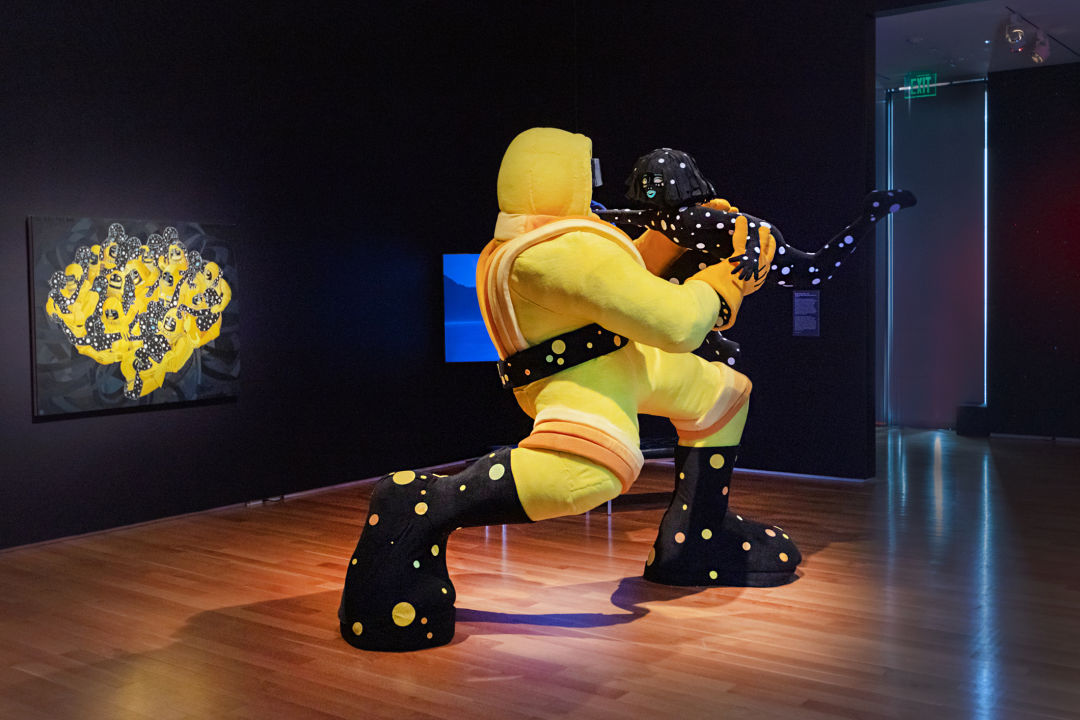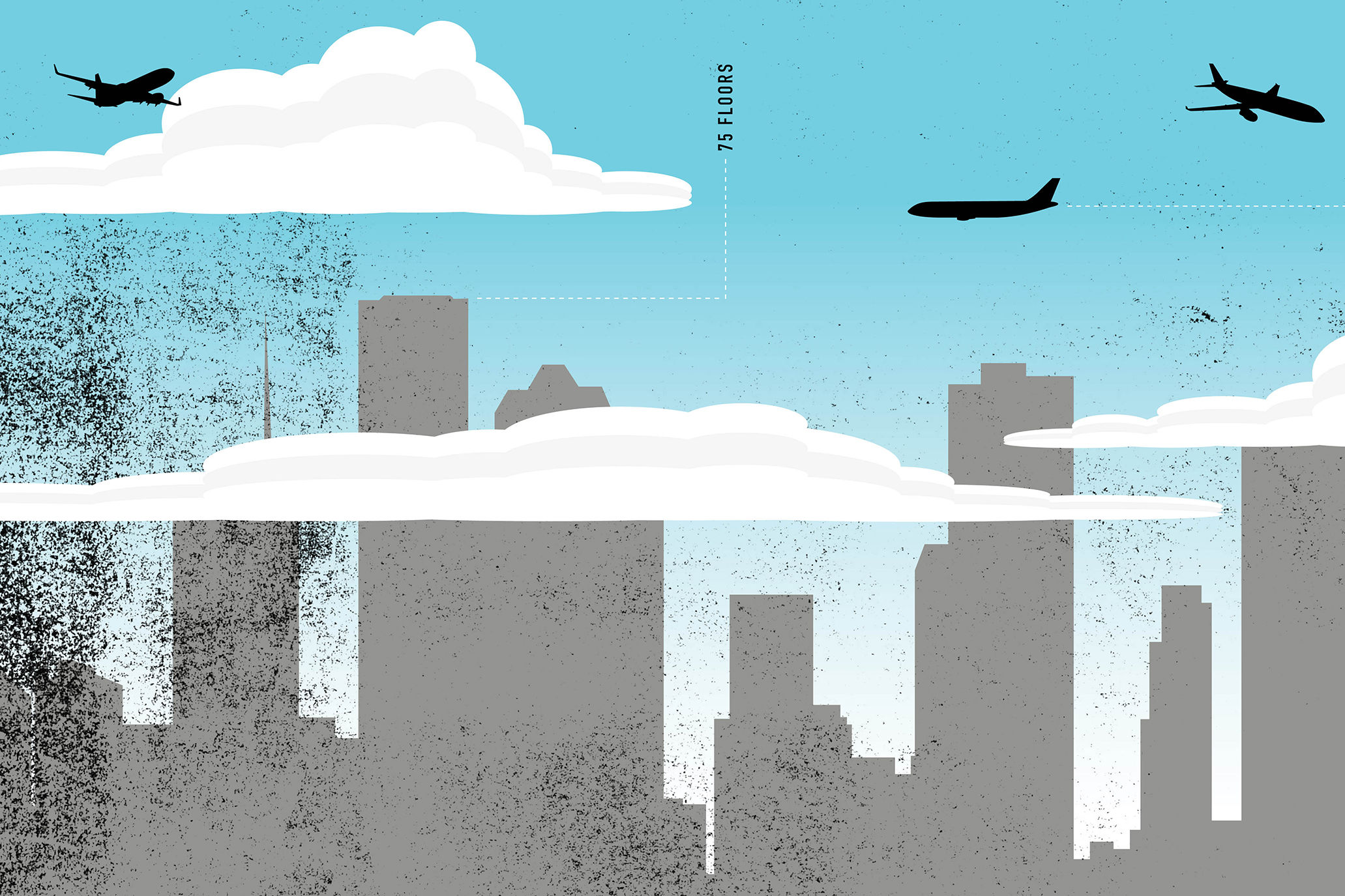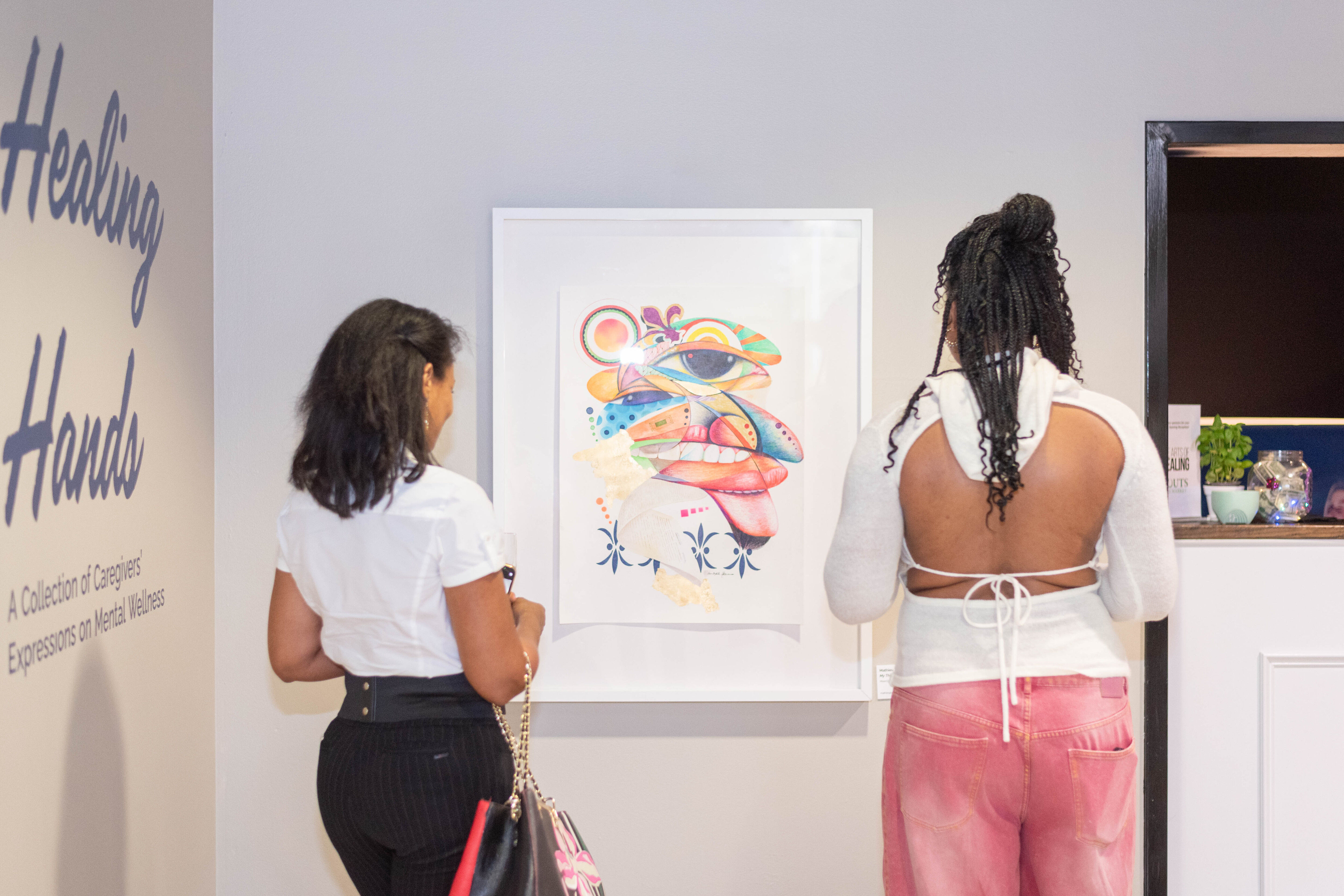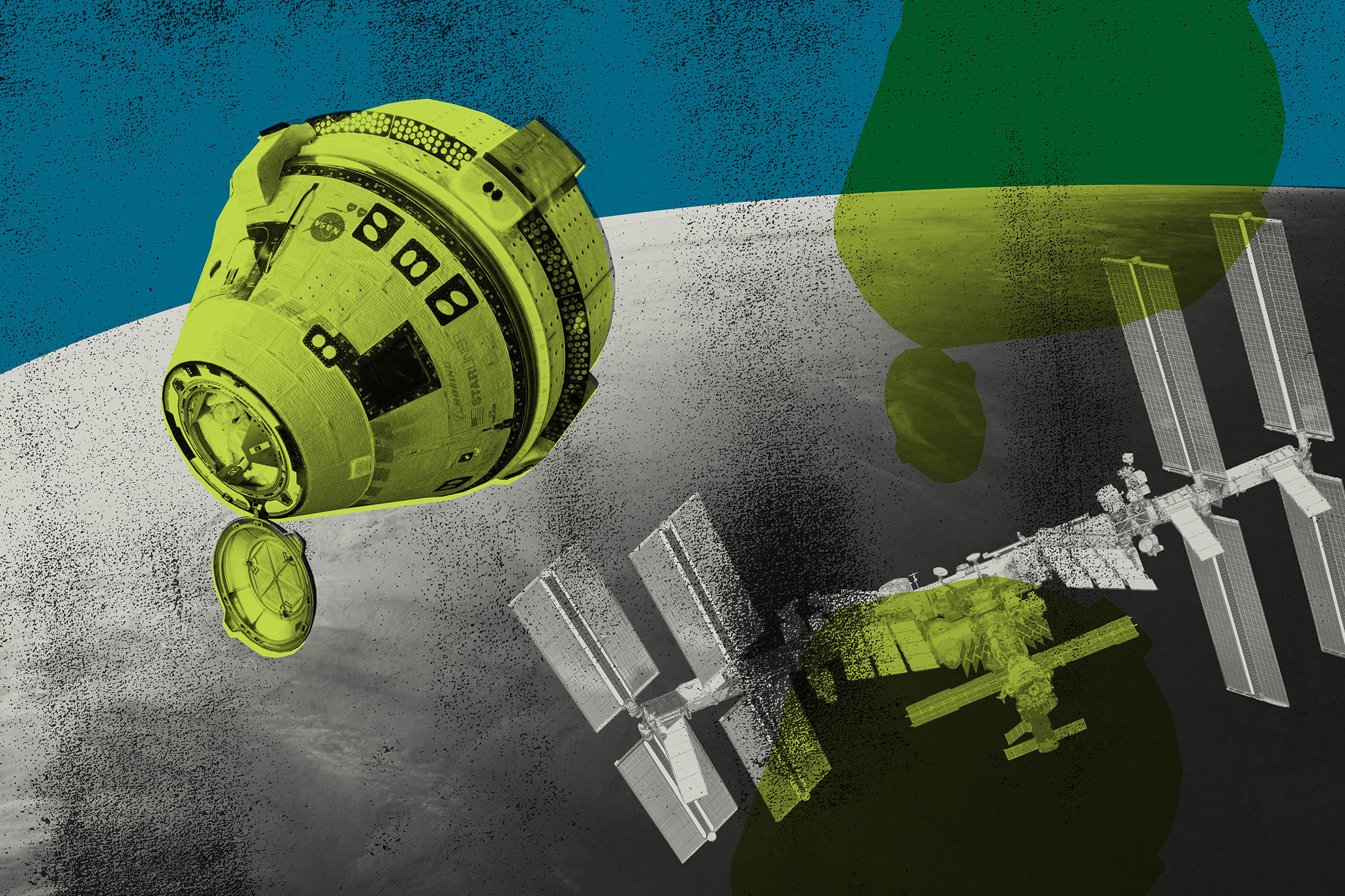Asia Society Travels the Stars with Art in the Age of Artemis

Houstonia’s The Must List tells you about something going on in Houston that you absolutely cannot miss.
It’s hard to tell with all the light pollution sometimes, but there are still celestial bodies floating up there in the Houston sky every night. You may be lucky enough to catch a star or a planet, maybe even a constellation or two. But when the cloud cover insists on looming and downtown remains lit up like a 300-block carnival ride, Asia Society Texas’s latest art exhibition makes it possible for visitors to stargaze no matter the time of day.
On view until March 16, Space City: Art in the Age of Artemis celebrates one of the many beautiful convergences of art and science, with a focus on the beauty of space exploration and imagining the universe’s potential unknowns. The exhibit is broken up into four different themes—Origins, Celestial Bodies, Space Technology, and Other Worlds—and over half of the featured artists have ties to Houston. Some, such as retired astronaut and former International Space Station commander Dr. Leroy Chiao and multidisciplinary artist Erika Blumenfeld, have personally worked with NASA.
“Looking upwards towards the sky is not just a human experience, but an experience of consciousness,” says artist Ruhee Maknojia, who created the original painting The Portal for the show. “If we’re conscious and knowing of what we’re looking at, there’s no way to not respond to that or be curious about it, and as a result it goes into the making process.”
Along with one of Dr. Chiao’s achingly wondrous photos of the moon, taken during his 229 cumulative days in orbit, Maknojia’s work appears in the Origins segment, which is about the Big Bang and the beginning of life.
When soundtracked by a haunting ambient work by Ander Mikalson in collaboration with astronomer Mark Whittle, which fills the room every nine minutes, Maknojia’s The Portal takes on an ethereal and reflective quality. Two canvases are hinged together, inviting visitors to open them like a door and think about the billions of years separating a mere cosmic speck from today.
“I was kind of interested in this concept of the microscopic point, and these ideas of the primordial atom and the Big Bang Theory…from this tight, condensed, microscopic dot came this explosion through which the universe was formed,” she says. “It almost feels like thinking about portals, the opening of a space. And so that’s really what this art piece was inspired from.”

Dr. Chiao’s photography also appears in the Celestial Bodies section, alongside an interactive sculpture by Virginia L. Montgomery (yes, you’re allowed to sit on it!) and a spherical ceramic by the late Toshiko Takaezu, herself the subject of an upcoming MFAH exhibition. These are the only orbital photos in Art in the Age of Artemis, grounding the theoretical, the fanciful, and the interpretive in the reality of outer space’s true aesthetic and unrealized potential.
“It’s very much like being on top of a dark mountain top on a clear night. The only difference is the light is more clear and you can see dim constellations more clearly,” he says. “You can see a lot of great things when you’re in space. The first time I actually saw the Earth from space, it was so much better than the photographs I had seen or the IMAX movies.”
As part of the research process for Art in the Age of Artemis, curator Owen Duffy took a group of artists on a behind-the-scenes tour of Johnson Space Center, including the NASA Neutral Buoyancy Laboratory where astronauts train for zero-gravity environments. In Life Is Elsewhere, part of the Space Technology gallery, artist Farima Fooladi synthesizes imagery from the lab with those of the ancient pools found in Iran. Thirteenth century Maragheh Observatory astronomers pontificate around waters equipped with space age marvels, all overseen by a snakelike constellation.
“I think [Art in the Age of Artemis] hopefully is both a representation of how exciting the Houston art scene is, but also how contemporary artists, more broadly, still see outer space as a powerful and important subject to make art about,” Duffy says.

JooYoung Choi’s sculpture Spacia and Amplexus: The Infinite Nature of Love and its companion painting You Are the Answer to My Question takes the curiosity that defines the previous sections and brings them to a whimsical conclusion as part of the Other Worlds theme. The sculpture’s titular characters—respectively, a black star who achieved sentience and a gentle giant spaceman who loves consensual hugs—lock together in a perpetual embrace. They grin lovingly and widely at one another, telling a story of companionship and imagination beyond the familiar parts of the universe. Ultimately, Spacia and her dear Amplexus move Art in the Age of Artemis from the realm of science to science fiction, finding the joy of exploration in the speculative just as much as the concrete.
“The Earth is so beautiful, and every part of it is different and beautiful in its own way,” Dr. Chiao says.
Know Before You Go
Art in the Age of Artemis is on view at Asia Society Texas until March 16. Admission is $15 for the entire Asia Society experience or $8 just to visit the gallery space. Asia Society is free on Thursdays. For more information, check out the website.




